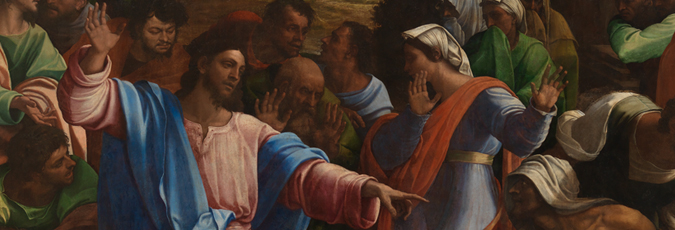Form and faith
Michelangelo and Sebastiano kept in close touch via letters during the former’s residence in Florence between 1516 and 1534. Sebastiano became one of Michelangelo’s trusted middlemen in Rome, and Michelangelo would occasionally help his younger colleague with drawings for his commissions.
One of the first projects on which Sebastiano helped Michelangelo was, in 1521, the reception and installation of a classically inflected, nude statue of Christ (1519–21) in the church of S. Maria sopra Minerva. This was his second, radically revised version of a statue he had undertaken for a Roman patrician family. He had abandoned work on the first version (1514–15) due to a flaw in the marble; it would be finished by another sculptor in the early 17th century.
In this period, Sebastiano was working on a chapel for their mutual friend, and Michelangelo’s broker, Pierfrancesco Borgherini at S. Pietro in Montorio, Rome. Upon commission in 1516, the patron had expected Michelangelo to provide the designs, but he only managed to provide drawings for the central ‘Flagellation of Christ’. Sebastiano completed the rest on his own between 1518 and 1524. The combination of the ‘Flagellation’ with Christ’s 'Transfiguration' was inspired by a contemporary prophetic text, the ‘Apocalypsis Nova’, which had become a touchstone of the progressive reform movement within the Church.
Sebastiano painted the upper sections in fresco, but switched to oil for the lower parts, including the ‘Flagellation’. Although an old technique, the method of applying oil to the wall was little understood in Rome and Sebastiano’s successful implementation of the technique was widely acclaimed. The atmospheric effect he achieved, coupled with Michelangelo’s design, made it the most influential of their joint works, inspiring countless later renditions of the subject.

